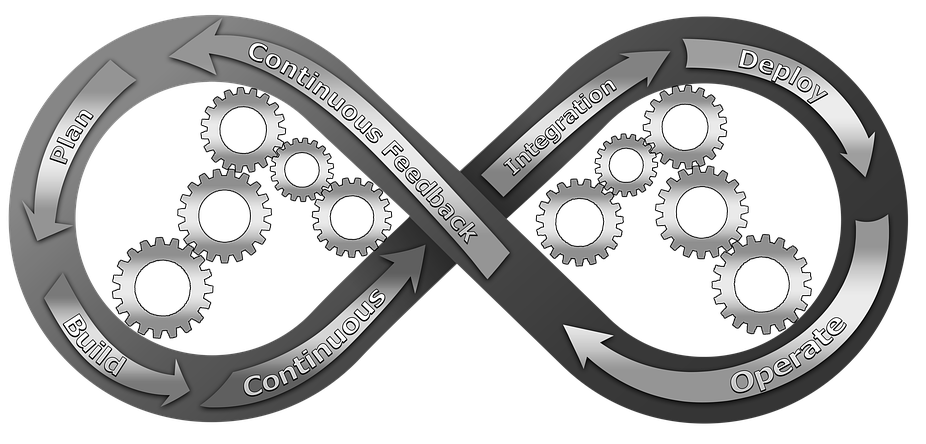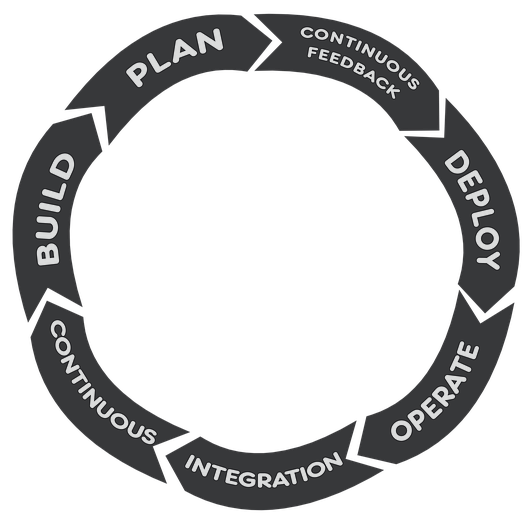This article explores the integration and requirements of DevOps with Test Automation.

Digital transformation is gaining traction every single day. The modern consumer is more demanding of quality products and services. Adoption of technologies helps companies stay ahead of the competition. They can achieve higher efficiency and better decision-making.
Further, there is room for innovation that aims to meet the needs of customers. All these imply integration, continuous development, innovation, and deployment. All this is achievable with DevOps and the attendant test automation.
But, can one exist without the other? We believe not; test automation is a critical component of DevOps, and we will tell you why.
Understanding Test Automation
There are many tests software developers need to carry out in the entire developmental cycle. There is the option of manual and automation testing. Like most manual processes, the first option can be time-consuming. It places the entire process on humans to handle the different test case scenarios. Such include checking log files, identifying database errors, and so much more. The tasks can be repetitive and prone to human fallibilities.
Automated testing uses automation tools to do the tests. It decreases dependency on human intervention while increasing efficiency. It cuts down on the time it takes to do the test, and the results are more reliable. There has to be a framework and relevant test scripts to validate the functionality of the different applications.
So you may be wondering, why does manual testing continue to be relevant, despite the obvious benefits of automated testing? The reality is machines and technology can never fully replace humans.
Some test case scenarios are not possible with automated testing tools. How do you, for example, measure user experience (UX) with a machine? The use of test scripts may also limit what results testers can get with automation. It is possible to miss some areas resulting in the inability of the automation tools to identify certain glitches or errors.
Understanding the Process of DevOps

DevOps incorporates two words, development and operations. The process looks at practices and tools. All these increase an organization’s ability to deliver services and applications.
DevOps means a departure from traditional to more modern methods. It impacts continuous integration (CI) and continuous development (CD). All these processes are critical to the success of a company.
Other benefits include:
- Higher speed in processes like innovation and adaptation of technologies
- Rapid delivery of the product to the market
- Reliability in processes through practices like continuous delivery and integration
- Better collaboration amongst teams, and so much more
Test Automation and DevOps
One of the biggest challenges with software is the need for constant updates. That is the only way to avoid glitches while improving upon what exists. But, the process of testing across many operating platforms and devices is difficult.
DevOps processes must execute testing, development, and deployment in the right way. Improper testing can lead to low-quality products.
Customers have so many options in the competitive business landscape. The company ends up losing to competitors who have the right DevOps processes in place.
Let’s look at the critical role of test automation in DevOps.
You Save On Time and Money
Software development without test automation is like working blind. The developers have to depend on feedback on the quality or functionality of the product. It becomes hard to establish at what time in the development cycle the defect came in.
The company loses the critical cause-and-effect connections. Such insights could prevent future glitches. Imagine how much time and money you would need to trace the roots of the issue.
Next, it will impact how long it takes to deliver products into the market. The impact on the company’s bottom line can be devastating.
Test Automation Provides Efficiency in Processes
Think about how much time it would take a programmer to translate code into machine language. Now factor in the boredom that is likely to arise from the repetitive nature of the task.
The final output may be full of errors. It will render the manual translation ineffective. Test automation includes the use of computers, relevant programs, and even test scripts.
The system runs the test and identifies any anomalies or deviations. The team gets instant feedback on what areas need their attention. A task that would have taken months to do can now be completed in a matter of days.
Reliability, Consistency, and better collaboration
The right test automation tools remove the guesswork and human errors. Code validation occurs at every stage of the development cycle. Teams can identify and make corrections immediately as they occur. The results are consistent and reliable.
The developers ensure that everything behaves or goes as it should. Best of all, it is possible to replicate the test builds across production lines or servers. A company will also see better collaboration.
Once the systems are in place, things run as they should. It eliminates disputes and infighting that can occur in developmental stages. The company achieves higher productivity. It can also run thousands of deployments every single day.
Ability to test many variables
As we have already stated, test automation does not replace manual testing. Usability tests, for example, still depend on the latter. But, automation allows developers to test many variables in a short time.
Further, it allows for more flexibility in the test platforms across different devices, systems, networks, and even geographies.
Companies that use manual testing have to invest a lot in human resources. Yet, there is no assurance that the final output will be up to par. The reality of the job is that it is repetitive, tedious, and can get boring.
A sloppy worker can also miss critical areas due to inattention. The company may only receive feedback once the product goes into the market. Test automation eliminates human fallibilities that could impact the outcome.
Test Automation shortens the feedback loop

Waiting to gather feedback from the market is time-consuming. You depend on what customers say to determine whether you did the right thing. In the best-case scenario, the feedback could be positive.
But, negative feedback from consumers can damage the reputation of the company. Test automation happens in every step of the development pipeline. The feedback is instantaneous, allowing for quick action to correct any anomalies.
Automation provides reference points
Your test automation processes are an excellent reference point. They can guide future activities. Companies have to face the constant threat of losing valued employees to competitors.
Whole developmental cycles can grind to a halt if such talents leave. Once you have the test automation scripts in place, anyone can run the system. It also gives a chance to improve upon processes. Further, you can apply them to different scenarios.
Final Thoughts
Companies operating in the 21st Century have to embrace digital transformation. DevOps is critical for companies that want to stay ahead of innovation. It ensures the delivery of quality products and services. Such occur through continuous integration (CI) and continuous development (CD). The processes are critical for the success of any business.
Further, DevOps allows for the streamlining of processes resulting in higher productivity. But, to achieve all these, companies must incorporate test automation in their processes. While it is true that the initial investment may be a bit high. The benefits to the business are numerous, as we have highlighted in the article above.
There is higher efficiency and less dependence on human intervention. It helps remove errors that come from manual processes.
Automation cuts down on the time it takes to put products out into the market while saving money. In the end, organizations can achieve better growth and ROI.
- Note: All images in this article are referenced from Pixabay
- Understanding PostgreSQL SUBSTRING function - September 21, 2024
- How to install PostgreSQL on Ubuntu - July 13, 2023
- How to use the CROSSTAB function in PostgreSQL - February 17, 2023

